Antioxidant Responses in Chromium-Stressed Maize as Influenced by Foliar and Root Applications of Fulvic Acid
- PMID: 39779785
- PMCID: PMC11711313
- DOI: 10.1038/s41598-024-84803-4
Antioxidant Responses in Chromium-Stressed Maize as Influenced by Foliar and Root Applications of Fulvic Acid
Abstract
Maize (Zea mays L.) faces significant challenges to its growth and productivity from heavy metal stress, particularly Chromium (Cr) stress, which induces reactive oxygen species (ROS) generation and damages photosynthetic tissues. This study aimed to investigate the effects of fulvic acid (FA) application, via foliar spray or root irrigation, on mitigating chromium stress in maize by evaluating its impact on antioxidant activity and growth parameters. Two maize varieties, P3939 and 30Y87, were subjected to chromium stress (CrCl3·6H2O) at concentrations of 300 µM and 100 µM for a duration of 5 weeks. The experiment was conducted in a wire house under natural environmental conditions at the Seed Centre, Institute of Botany, University of the Punjab, Lahore, Pakistan. Physiological assessments included electrolyte leakage, chlorophyll pigment content, malondialdehyde (MDA) levels, and activities of antioxidant enzymes such as catalase (CAT), ascorbate peroxidase (APX), and guaiacol peroxidase (GPX) in maize leaves. Growth parameters were also monitored. The results revealed that chromium stress significantly reduced chlorophyll content and increased oxidative stress, as evidenced by elevated MDA levels and electrolyte leakage. However, FA application notably mitigated these effects: chlorophyll content improved by 15%, and MDA levels decreased significantly. Irrigation with FA was particularly effective, reducing MDA levels by 40% compared to the 300 µM chromium treatment. Furthermore, while chromium stress enhanced antioxidant enzyme activities, FA application further boosted total soluble protein levels and antioxidant enzyme activities under stress conditions. In conclusion, FA application demonstrates potential in improving maize tolerance to heavy metal stress by enhancing the antioxidant defense system and preserving photosynthetic pigments. These findings highlight FA's promise as a practical strategy for mitigating the negative impacts of chromium stress on maize, promoting sustainable agricultural practices in contaminated environments.
Keywords: Antioxidant enzymes; Chromium toxicity; Maize growth; Oxidative damage; Reactive oxygen species; Stress mitigation.
© 2025. The Author(s).
Conflict of interest statement
Declarations. Ethics approval and consent to participate: All methods were performed in accordance with the relevant guidelines and regulations. We have obtained permission to collect plant material and seedlings. Competing interests: The authors declare no competing interests.
Figures
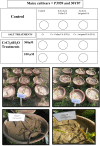
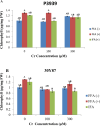
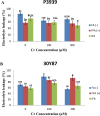
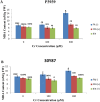
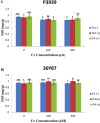
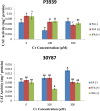
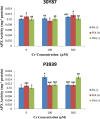



Similar articles
-
Insights into trehalose mediated physiological and biochemical mechanisms in Zea mays L. under chromium stress.BMC Plant Biol. 2024 Aug 17;24(1):783. doi: 10.1186/s12870-024-05514-6. BMC Plant Biol. 2024. PMID: 39152388 Free PMC article.
-
Role of silicon in alleviating boron toxicity and enhancing growth and physiological traits in hydroponically cultivated Zea mays var. Merit.BMC Plant Biol. 2024 Jun 14;24(1):550. doi: 10.1186/s12870-024-05275-2. BMC Plant Biol. 2024. PMID: 38872083 Free PMC article.
-
Promotive role of 5-aminolevulinic acid on chromium-induced morphological, photosynthetic, and oxidative changes in cauliflower (Brassica oleracea botrytis L.).Environ Sci Pollut Res Int. 2017 Mar;24(9):8814-8824. doi: 10.1007/s11356-017-8603-7. Epub 2017 Feb 18. Environ Sci Pollut Res Int. 2017. PMID: 28214935
-
Advances in deciphering the mechanisms of salt tolerance in Maize.Plant Signal Behav. 2025 Dec;20(1):2479513. doi: 10.1080/15592324.2025.2479513. Epub 2025 Mar 18. Plant Signal Behav. 2025. PMID: 40098499 Free PMC article. Review.
-
A Review of the Protective Effects of Ferula asafoetida on the Liver, Kidney, and Testes Against Formaldehyde-Induced Damage.Cureus. 2025 Feb 24;17(2):e79545. doi: 10.7759/cureus.79545. eCollection 2025 Feb. Cureus. 2025. PMID: 40144445 Free PMC article. Review.
Cited by
-
Physiological and molecular responses of tomato and citrus to chromium (III) stress at early growth stage.BMC Plant Biol. 2025 May 28;25(1):722. doi: 10.1186/s12870-025-06567-x. BMC Plant Biol. 2025. PMID: 40437386 Free PMC article.
-
Phytohormonal modulation alleviates arsenic toxicity in rice by enhancing antioxidant defenses, proline metabolism, and arsenic detoxification mechanisms.Sci Rep. 2025 Jul 24;15(1):26953. doi: 10.1038/s41598-025-11629-z. Sci Rep. 2025. PMID: 40707530 Free PMC article.
References
-
- Fatima, A., Shabaan, M., Ali, Q., Malik, M., Asghar, H.N., Aslam, M., Zulfiqar, U., Hameed, A., Nazim, M., Mustafa, A.E.Z.M. and Elshikh, M.S. Integrated application of metal tolerant P. fluorescens and press mud for conferring heavy metal tolerance to aloe vera (Aloe barbadensis). Plant Stress, 11, 100333 (2024).
-
- Sarwar, M.J., Shabaan, M., Asghar, H.N., Ayyub, M., Ali, Q., Zulfiqar, U., Nazim, M., Alarjani, K.M. and Elshikh, M.S. Interaction of chromium (Cr) resistant plant growth promoting rhizobacteria with compost to phytostabilize Cr in spinach rhizosphere. Plant Stress, 10, 100261 (2023).
-
- Mehdiniya Afra, J. et al. Influence of chemical fertilizers and animal manure on morphological traits of medicinal plants in Northern Iran. Res. Crop Ecophysiol.17(2), 86–101 (2022).
-
- Laxmi, V. & Kaushik, G. Toxicity of hexavalent chromium in environment, health threats, and its bioremediation and detoxification from tannery wastewater for environmental safety. In Bioremediation of industrial waste for environmental safety: volume I: industrial waste and its management (eds Saxena, G. & Bharagava, R. N.) 223–243 (Springer Singapore, 2020).
Publication types
MeSH terms
Substances
LinkOut - more resources
Full Text Sources
Medical
Research Materials
Miscellaneous

